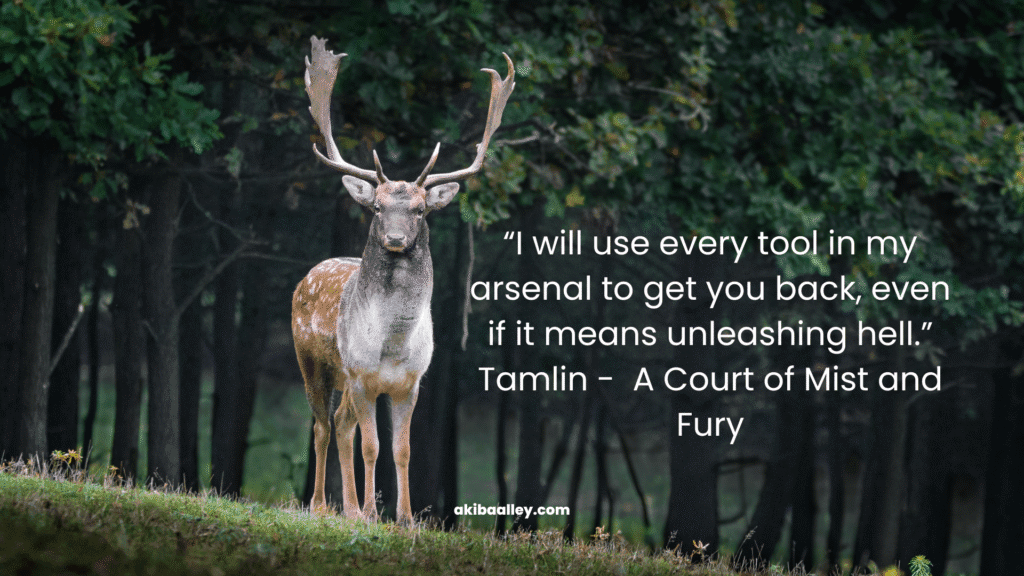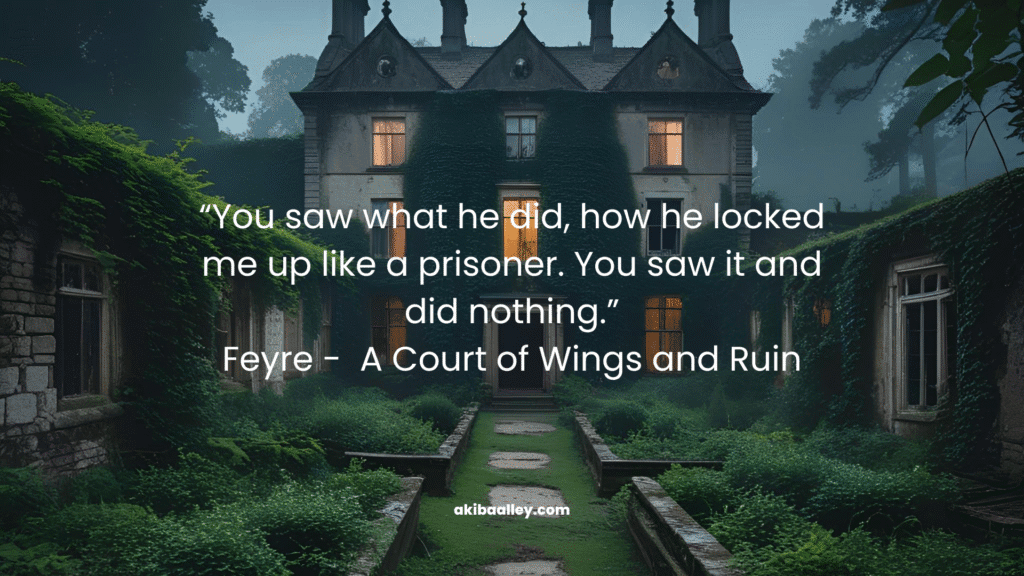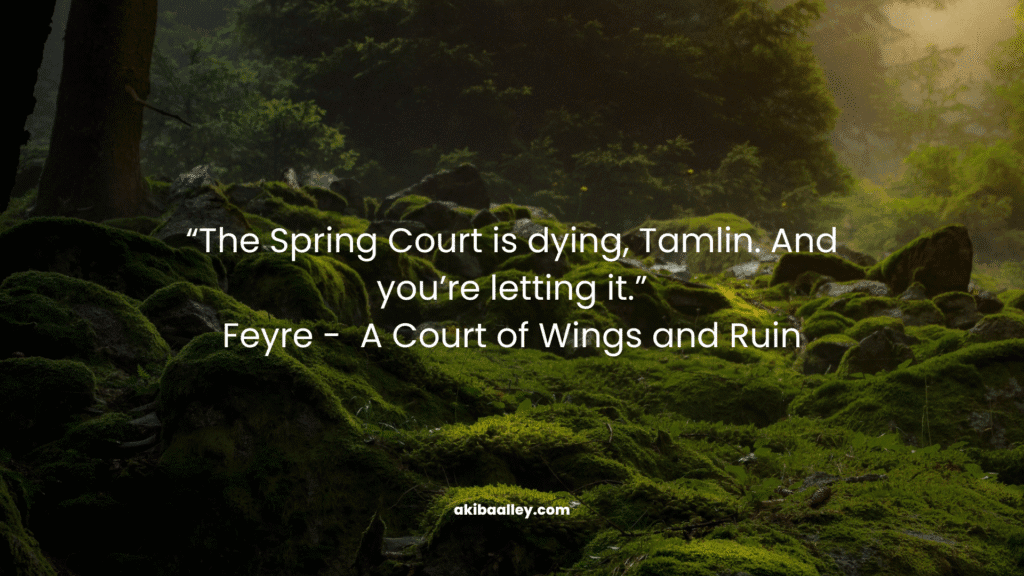Once a fan-favorite and romantic lead, Tamlin, the High Lord of the Spring Court, has become one of the most polarizing characters in Sarah J. Maas’ A Court of Thorns and Roses series. Initially presented as a protective and noble fae, Tamlin’s journey through the series reveals a deeply flawed man whose need for control, unresolved trauma, and explosive anger contribute to his personal unraveling, and leave lasting consequences on everyone around him.
This article takes an unflinching look at Tamlin’s descent, analyzing his most toxic traits, anger, possessiveness, and control, and how these affect Feyre, Lucien, and the Spring Court. We also explore how these flaws influence his choices, lead to his eventual isolation, and reflect larger themes of power, trauma, and redemption.
Tamlin in the Beginning: The Golden Facade
When Feyre first enters the Spring Court, Tamlin appears to be the classic romantic hero; mysterious, powerful, protective. He offers her safety, beauty, and even a glimpse of love. However, early signs of his need for control are already present. He keeps Feyre in the dark about the blight affecting Prythian, refusing to arm her with the truth. Even when his silence is meant to “protect” her, it also denies her agency, a pattern that becomes central to their relationship.
Tamlin’s protectiveness quickly curdles into possession, disguised as love. While Feyre initially accepts his authority, especially after enduring poverty and trauma in the human world, this imbalance becomes more dangerous as Feyre begins to change.
Control Masquerading as Love
By the time A Court of Mist and Fury begins, Feyre is a different person, hollowed by trauma after surviving Under the Mountain. Instead of offering emotional support, Tamlin attempts to lock her into a role that no longer fits. He wants her to be the submissive lady of the court, a passive ornament in his world, not an equal partner with agency or power.

Tamlin clearly sees her mentally deteriorating after the events of Under the Mountain, yet he chooses to confine her in the manor and appoints a watcher, Priestess Ianthe. Time and again Feyre begs Tamlin to allow her to help keep watch over spring court or help rebuild but he still denies her any form of distraction, relief and healing. He refuses to allow her to train and get stronger to protect herself and this hinders her to discover and control her new found magical powers.
Furthermore, he does not allow Feyre to know the full scope of what is happening in the Spring Court. He constantly hides vital information from her, isolates her and neglects her needs. His unresolved trauma leads Feyre to be isolated from everyone, including the people of the Spring Court. Tamlin dismisses all servants from the manor and Feyre is not allowed to help in rebuilding the Spring Court. With no form of distraction, Tamlin hinders chances for Feyre to heal from her trauma and become a part of Spring Court.
He appoints Ianthe as a “friend” but really she is only there to watch and report to Tamlin about Feyre’s activities around the manor. He fails to see that Ianthe is a poison to Feyre and she is slowly and effectively ensuring that Feyre is seen more as a prop than Tamlin’s love. Tamlin is blind to see Ianthe’s machinations to gain power in the Spring Court by making Feyre inconsequential.
Feyre’s mental health deteriorates under Tamlin’s control. She experiences nightmares, anxiety, and a loss of self. Instead of offering support, Tamlin’s actions exacerbate her trauma, illustrating the detrimental effects of his behavior.
His need to control Feyre escalates. He refuses to let her leave the Spring Court, even going as far as to place magical wards and surveillance around her. The moment that defines his descent is when he literally traps her inside the manor, invoking trauma and panic, an act of emotional abuse masquerading as protection. His obsession with control ultimately pushes Feyre away and solidifies the beginning of his fall.
Lucien: Collateral Damage
Tamlin’s toxicity doesn’t end with Feyre. Lucien, his emissary and supposed closest friend, suffers under Tamlin’s increasingly volatile moods. Though Lucien clearly disagrees with many of Tamlin’s choices, especially regarding Feyre, he remains shackled by loyalty, guilt, and fear. Their dynamic shifts from camaraderie to one of dominance and silence, where Tamlin’s authority crushes Lucien’s voice.
Lucien, a character with his own tragic past, becomes another victim of Tamlin’s unrelenting need to control his surroundings. He is often dismissed, berated, or emotionally manipulated all of which contribute to his eventual alienation and disillusionment.
As Tamlin’s behavior becomes increasingly controlling and volatile, Lucien is trapped in an impossible position. He’s often the only voice of reason in the Spring Court, urging Tamlin to listen to Feyre, to allow her agency, and to acknowledge her trauma. But his words go unheard, and worse, dismissed. The dynamic between Tamlin and Lucien shifts from friendship to something akin to a master silencing a subordinate.

Lucien’s internal struggle is heartbreaking:
-
- He is morally conflicted, knowing Feyre is suffering, yet too afraid or bound by loyalty to defy Tamlin.
-
- His own trauma, including his past with his family and his complicated relationship with his mate, Elain, makes him more empathetic, more human.
-
- He becomes emotionally isolated, unable to stand up fully for Feyre but visibly eroded by the consequences of staying silent.
Perhaps the most telling moment is when Lucien accompanies Feyre back to the Spring Court in A Court of Wings and Ruin, believing she has returned of her own will. The moment he realizes the truth, that she’s playing a long game of revenge, he doesn’t expose her. Instead, he watches the Spring Court tear itself apart under Tamlin’s erratic leadership, knowing that Feyre’s wrath is justified. If Tamlin relied on Lucien and his abilities as a sly fox, he would have been privy to Feyre’s plan for the Spring Court and possibly stop it. However, his character flaws and negligence blind him from noticing the shift in his court and Lucien’s silence when Feyre serves the last blow.
The Spring Court: A Kingdom in Decline
Once a realm of vibrant fields, soft breezes, and endless blossoms, the Spring Court begins the series as a place of comfort and wonder. But beneath its surface beauty lies rot; the rot of a ruler who cannot evolve and a kingdom caught in stasis.
Tamlin’s internal decay mirrors the decay of the Spring Court itself. Once a realm of beauty and renewal, it becomes desolate, brittle, and broken under his leadership. His anger and instability infect the court, turning it into a symbol of stagnation rather than growth.
When Feyre returns to the Spring Court on a revenge mission, Tamlin is already a shell of his former self, guilt-ridden, angry, and desperate. He makes increasingly erratic choices, including allying with Hybern, a betrayal that seals his court’s fate and underscores how far he’s fallen.

Tamlin’s spiral into obsession and emotional tyranny doesn’t just affect the people close to him, it poisons the court itself. His refusal to adapt or acknowledge the changing political and emotional landscapes leaves the Spring Court vulnerable. Instead of being a bastion of life and renewal, it becomes:
-
- A haunted estate, full of silence, fear, and broken trust.
-
- A place where servants walk on eggshells, and the magic that once fed the land begins to weaken.
-
- A symbol of decay, where growth is no longer nurtured, only suppressed.
Under Tamlin’s leadership, the Spring Court fails its people. His alliance with Hybern, a desperate, morally bankrupt decision, is the final fracture. What was once one of the most beautiful and powerful courts in Prythian becomes a cautionary tale about how leadership without empathy is leadership doomed to collapse.
Even when Tamlin shows moments of regret or attempts to make amends during the war, his court remains in ruins, politically isolated, magically diminished, and emotionally broken.
The Spring Court isn’t just a casualty of war. It is a reflection of Tamlin’s soul: once full of promise, now withered by fear, control, and unhealed wounds. His decisions, driven by fear of loss, wounded pride, and possessiveness cost him the trust of his people and the loyalty of his court. By the end of the series, Tamlin is a tragic figure, ruling over ruins both literal and emotional.
Consequences and the Long Road to Redemption
Throughout the series, Tamlin rarely takes responsibility for his actions. He justifies his behavior as acts of love or protection, failing to acknowledge the harm he causes. This lack of accountability hinders his growth and damages his relationships.

Tamlin’s actions have irreversible consequences:
-
- Feyre finds freedom and healing with Rhysand, leaving Tamlin behind as a symbol of what she had to escape to grow.
-
- Lucien distances himself, forging new alliances and loyalties far from Tamlin’s influence.
-
- The Spring Court is fractured, its magic weakened, and its people unprotected.
And yet, Sarah J. Maas doesn’t write Tamlin off entirely. In A Court of Wings and Ruin, there are glimpses of regret and sacrifice notably when Tamlin helps Feyre during the war. These moments suggest that while he may never fully atone, he is not beyond understanding the weight of his actions.
Still, redemption is not a guarantee. Tamlin ends the series alone, a reminder that power without empathy, love without respect, and control without trust will always lead to ruin.
Final Thoughts: Tamlin as a Cautionary Character
Tamlin’s journey is not just a character arc, it’s a cautionary tale. He represents how trauma, when left unchecked, can twist love into domination, and how fear of loss can breed destruction instead of connection. His story challenges the idea of the “brooding hero” trope, exposing the dangers of romanticizing possessiveness as passion.
Through Tamlin, Maas explores what happens when a man cannot evolve with the woman he claims to love and what’s left when the need to protect becomes a prison.
Have thoughts on Tamlin’s downfall or theories about his future in Prythian? Share your take in the comments. Let’s discuss the High Lord who lost everything and what that reveals about love, power, and healing.






